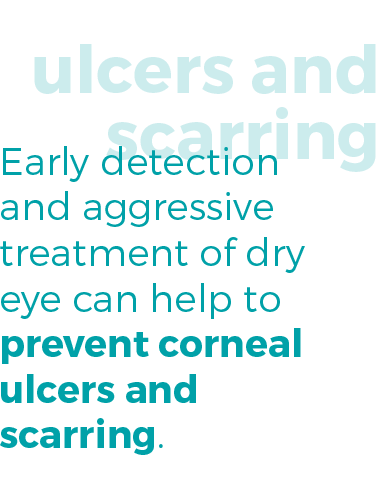Fuchs dystrophy is a progressive, hereditary corneal disease which causes cells in the endothelium to gradually die off. Healthy endothelial cells remove excess fluids from the cornea. When these cells die, fluid buildup in the cornea causes swelling, resulting in cloudy or hazy vision. There are two stages of Fuchs dystrophy. In the early state (stage 1) vision may be affected upon first waking up, then improving throughout the day. In the later stage (stage 2) vision remains blurry or hazy throughout the day. Although current treatments can help relieve symptoms, Fuchs dystrophy is not curable.
Fuchs dystrophy
Sjögren's syndrome
About 10% of patients with clinically significant dry eye have Sjögren's syndrome.1 These patients also tend to have xerostomia or connective tissue disease. The remaining patients tend to be women who are postmenopausal, pregnant, or taking oral contraceptives or hormone-replacement therapy. Meibomian gland dysfunction, leading to excessive tear evaporation, is also recognized as a key component.2
Early detection and aggressive treatment of the condition can help to prevent corneal ulcers and scarring. The primary treatments include supplemental lubrication of the eye, topical ciclosporin to reduce inflammation and enhance production of the tear layers’ aqueous component, oral omega-3 fatty acids, and plugs made of collagen or silicon that block the puncta.1,2
Santen has developed an ophthalmic ciclosporin emulsion, which may offer a unique approach to treating severe keratitis in patients with dry eye that hasn’t improved with tear substitutes. It is approved for use in Europe and Asia and is currently in clinical trials in other regions.

References:
- American Academy of Ophthalmology, Cornea/External Disease Panel. Preferred Practice Pattern® Guidelines. Dry Eye Syndrome. San Francisco, CA: American Academy of Ophthalmology; 2013.
- Foster CS. Dry eye syndrome (keratoconjunctivitis sicca). Medscape, April 27, 2017. Available at: http://emedicine.medscape.com/article/1210417-overview#a2. Accessed on January 28, 2019.
